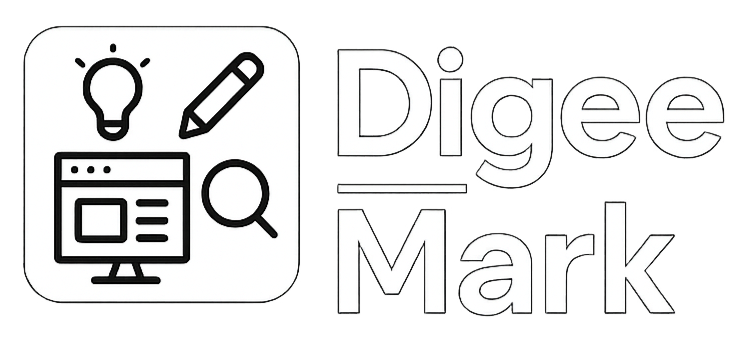Turn Web Pages into Structured Data Easily with Pline.ai Introduction In today’s data-driven world, businesses and professionals rely heavily on accurate, up-to-date information pulled directly from the web. Whether it’s product listings, job postings, market trends, or competitor analysis, the ability to turn messy web pages into clean, structured datasets can unlock powerful insights. Traditionally, this required technical skills, complex coding, or hiring specialized teams — but not anymore. That’s where Pline.ai steps in. Built on over a decade of expertise from its parent company Grepsr, Pline.ai is a no-code data extraction platform designed to make web scraping accessible, secure, and reliable for everyone. With its intuitive browser extension, prebuilt workflows, and enterprise-grade privacy features, Pline.ai empowers users to extract structured data from websites quickly — without writing a single line of code. In this article, we’ll dive deep into what Pline.ai offers, why structured web data matters, and how businesses of all sizes can use this platform to gain a competitive edge. 1. What Is Pline.ai? Pline.ai is a cloud-platform + browser extension designed to simplify collecting data from websites. Instead of writing code or scripts, you can use its visual tools, prebuilt workflows, or browser extension to extract structured data (tables, listings, metadata, etc.). pline.ai It’s built on about 13 years of experience from Grepsr, bringing enterprise-grade extraction, security, and reliability. pline.ai 2. Why Structured Data Matters Websites usually display data meant for humans — not machines. Think listings, product tables, reviews, etc. For businesses, researchers, marketers — structured data means easier analysis, reporting, feeding into dashboards, automations. Without structure, a lot of time is wasted cleaning, formatting, or even manually copying data. Pline.ai aims to bridge that gap, making web data usable fast. 3.Who Benefits Most Here are some situations or roles where Pline.ai shines: E-commerce Sellers & Analysts: tracking product listings, competitor pricing, trending items. Market Researchers: extracting data for trend spotting, sentiment, product under-serving. Recruiters & HR: pulling job postings from multiple sources. Real Estate Firms: collecting property listings, pricing, features, locations. Travel, Hospitality: gathering hotel reviews or pricing comparisons. Data-led Startups: needing clean input data for dashboards, ML models, or decision making Conclusion If you often find yourself copying data manually from websites, wrangling unstructured content, or dealing with tedious data collection tasks, Pline.ai offers a strong solution. It lowers the barrier, speeds up workflows, and adds trust and security. For businesses, researchers, analysts, and anyone needing reliable web data fast, it’s a platform worth exploring.
The Future of Web Development: Trends You Can’t Ignore in 2025
The Future of Web Development: Trends You Can’t Ignore in 2025 ntroduction Technology evolves at lightning speed, and web development is no exception. In 2025, businesses need more than just a functional website—they need smart, fast, and user-friendly digital experiences that keep up with customer expectations. The future of web development is being shaped by innovations like artificial intelligence, mobile-first design, headless CMS, and advanced security measures. For startups and business owners, staying ahead of these trends isn’t optional—it’s essential for growth and competitiveness. AI-Driven Websites: Smarter User Experiences Artificial Intelligence (AI) is transforming websites into adaptive, personalized platforms. AI-driven sites can analyze user behavior in real-time, recommend content, and even automate customer support through chatbots. Examples of AI in Web Development Chatbots & Virtual Assistants for 24/7 customer service. Personalized Content Delivery based on browsing habits. AI-Powered Analytics to track and optimize user journeys. By 2025, AI will be a cornerstone of modern websites, making them more interactive and efficient. Mobile-First and Responsive Design With over 70% of global traffic coming from mobile devices, the mobile-first approach is no longer a trend—it’s the standard. Why Mobile-First Matters Faster load times boost search engine rankings. Responsive designs improve user satisfaction. Businesses can reach wider audiences across devices. In the future of web development, businesses that prioritize mobile experiences will win customer trust and outperform competitors. Headless CMS: Flexibility and Speed Traditional content management systems are giving way to headless CMS solutions. These platforms separate content from design, enabling businesses to deliver content across websites, mobile apps, smart devices, and even VR platforms. Benefits of Headless CMS Faster Performance: Lightweight frameworks mean faster load times. Omnichannel Publishing: Manage content once, deliver everywhere. Developer Freedom: Flexible integrations with any front-end framework. For startups looking to scale, headless CMS offers agility and efficiency unmatched by traditional platforms. Low-Code and No-Code Development The rise of low-code/no-code platforms is democratizing web development. Business owners without technical skills can now create websites using drag-and-drop tools, reducing dependency on developers. Low-Code Tools: Provide flexibility for developers. No-Code Builders: Platforms like Webflow and Wix empower non-technical users. This trend accelerates digital transformation, especially for small businesses and entrepreneurs. Progressive Web Apps (PWAs): The Best of Web & Mobile PWAs combine the best of websites and mobile apps. They work offline, load instantly, and provide an app-like experience without requiring downloads. Why PWAs Are the Future Improved performance and reliability. Enhanced engagement through push notifications. Cost-effective compared to building native apps. Major companies like Twitter and Starbucks already use PWAs to improve customer engagement. Cybersecurity and Privacy-First Development As websites handle more data, security and privacy have become critical. The future of web development will see stronger encryption, stricter compliance (like GDPR and CCPA), and AI-driven threat detection. Businesses must prioritize secure coding practices to protect user trust. The Role of Web 3.0 and Blockchain Web 3.0 introduces decentralized web technologies powered by blockchain. This evolution promises greater transparency, ownership, and security for users. Websites may soon include crypto wallets, NFT integrations, and decentralized apps (dApps) as standard features. Conclusion The future of web development is about creating websites that are smarter, faster, and more adaptable than ever before. From AI-driven personalization and mobile-first design to headless CMS and blockchain-powered features, these trends are reshaping how businesses connect with audiences. For startups and business owners, embracing these innovations isn’t just about staying relevant—it’s about thriving in a competitive digital marketplace. 👉 At Digeemark.xyz, we specialize in future-ready web development solutions designed to help your business grow. Whether you need AI-powered features, mobile-first design, or advanced CMS integration, our team can build a website that’s ready for tomorrow.
The Importance of Interaction Design in Modern Websites
The Importance of Interaction Design in Modern Websites Introduction In today’s digital-first world, a website isn’t just a digital brochure—it’s a full-fledged experience. While visuals and layouts play an important role, the real magic lies in how users interact with your site. That’s where interaction design in websites comes in. It focuses on creating intuitive, user-friendly, and engaging experiences that keep visitors coming back. For businesses, interaction design directly impacts engagement, conversions, and brand credibility. What Is Interaction Design? Interaction design (IxD) is the process of designing interactive elements on a website to make the user journey smooth and engaging. It considers how users navigate, click, scroll, and respond to different features. Key Elements of Interaction Design Buttons & CTAs – Encouraging users to take action. Animations & Transitions – Making interactions visually appealing. Navigation Systems – Guiding users seamlessly through the site. Feedback Responses – Confirming user actions with visual or audio cues. Why Interaction Design Matters in Websites 1. Enhances Usability Good interaction design ensures that users can find what they need quickly. From intuitive menus to responsive buttons, usability makes a website effortless to use. 2. Boosts User Engagement Interactive elements like sliders, hover effects, and animations keep users engaged, reducing bounce rates. 3. Builds Brand Trust A smooth and professional user experience reflects positively on your brand. If users find your site easy to navigate, they’re more likely to trust your business. 4. Drives Conversions Well-placed CTAs, micro-interactions, and feedback loops guide users toward completing desired actions—whether that’s filling out a form, signing up, or making a purchase. The Role of Interaction Design in User Experience (UX) Interaction design is a critical part of UX design. While UX covers the overall journey, IxD ensures that every step of that journey feels intuitive and engaging. UX Example: Ensuring a shopping cart works smoothly. IxD Example: Designing an animation that shows items being added to the cart, giving instant feedback to the user. Together, they create experiences that are both functional and delightful. Conclusion The importance of interaction design in websites cannot be overstated. In an era where digital experiences shape customer perceptions, well-designed interactions are key to capturing attention, building trust, and driving conversions. At Digeemark.xyz, we specialize in crafting websites that go beyond aesthetics. Our team focuses on interaction design, UI/UX, and performance to deliver websites that truly engage and convert. 👉 Want to give your customers a seamless online journey? Let us help you design an interactive website that stands out.
The Future of Digital Solutions: Trends Businesses Can’t Ignore
The Future of Digital Solutions: Trends Businesses Can’t Ignore Introduction The business landscape is evolving at lightning speed. Customers are more digital-savvy, competition is fierce, and technology is advancing faster than ever. To thrive, companies must not only keep up but also anticipate what’s next. That’s why understanding the future of digital solutions is crucial for any business aiming to stay competitive. From artificial intelligence to immersive experiences, tomorrow’s digital solutions will reshape how businesses attract, engage, and retain customers. In this article, we’ll explore the top digital trends businesses can’t afford to ignore in the coming years. 1. AI-Powered Business Solutions Artificial intelligence (AI) is no longer a futuristic concept—it’s here, and it’s transforming industries. How AI Impacts Businesses Personalization: AI-driven tools help tailor content, products, and services to customer preferences. Automation: From chatbots to automated workflows, AI reduces manual tasks and boosts efficiency. Data Insights: Predictive analytics help companies make smarter decisions based on customer behavior. Businesses that adopt AI early will gain a competitive advantage in speed, accuracy, and personalization. 2. The Rise of Automation and Smart Workflows Automation goes beyond AI—it covers all tools and technologies that streamline repetitive processes. Examples of Automation in Action Automated email marketing campaigns. Workflow tools that connect multiple platforms (CRM, sales, social). Chatbots providing 24/7 customer support. For businesses, automation means lower costs, fewer errors, and more time to focus on strategy and innovation. 3. Cloud-Based Digital Solutions Cloud computing is no longer just about storage—it’s the backbone of digital transformation. Why Cloud Matters for the Future Scalability: Businesses can grow without worrying about IT infrastructure. Collaboration: Teams can work remotely with ease. Cost Efficiency: Pay-as-you-go models save money for startups and enterprises alike. From cloud-based CRMs to project management tools, companies must embrace the cloud to remain agile. 4. Personalized User Experiences (UX & UI) Customers expect more than just a functional website—they want an experience. Future UX/UI Trends Voice-enabled navigation. Minimalist, mobile-first interfaces. Micro-interactions that make browsing enjoyable. The future of digital solutions lies in designing experiences that are smooth, intuitive, and engaging. Businesses that ignore this will risk losing customers to competitors offering better user journeys. 5. Immersive Technologies: AR & VR Augmented Reality (AR) and Virtual Reality (VR) are revolutionizing industries from retail to education. Use Cases Businesses Can Leverage Retail: Virtual try-ons for clothes, glasses, or furniture. Real Estate: Virtual property tours. Training: Simulated learning environments for employees. AR and VR provide immersive, engaging experiences that enhance customer trust and decision-making. 6. Data Security and Privacy Solutions With digital transformation comes an increased responsibility for data protection. Key Trends in Security Stronger encryption and cybersecurity frameworks. Transparent data privacy policies. Compliance with global standards like GDPR. Businesses must prioritize digital security to protect customer trust and brand reputation. 7. The Growing Importance of SEO and Content Search engine algorithms are constantly evolving, but one thing remains true: content and SEO are critical. Future SEO Trends AI-driven content creation and optimization. Voice search optimization. Semantic SEO focusing on search intent. For businesses, investing in SEO ensures long-term visibility and organic traffic growth. 8. Digital Collaboration Tools for Hybrid Work Hybrid work is here to stay, and businesses need digital solutions that support flexibility. Examples Video conferencing platforms with AI features. Cloud-based project management software. Digital whiteboards for real-time brainstorming. The future belongs to companies that adopt tools enhancing collaboration across remote and in-office teams. 9. Sustainable Digital Practices Customers are increasingly drawn to brands that value sustainability. Digital Sustainability Solutions Eco-friendly web hosting. Optimized digital infrastructure reducing energy usage. Paperless workflows powered by cloud solutions. Sustainability is no longer a choice—it’s a business necessity. Conclusion The future of digital solutions is shaping businesses in ways we couldn’t have imagined a decade ago. From AI to immersive tech, from SEO to sustainable practices, these innovations are creating new opportunities for companies to grow and connect with their customers. At Digeemark.xyz, we specialize in building future-ready digital solutions—covering web development, SEO optimization, UI/UX design, and interaction design—that help businesses stay ahead in an ever-changing digital world. 👉 The future is digital. Is your business ready? Let’s build it together.
How UX Pilot Makes UI/UX Design Easy with Text Prompts
How UX Pilot Makes UI/UX Design Easy with Text Prompts Introduction Designing a user interface (UI) or user experience (UX) used to require hours of brainstorming, wireframing, and prototyping. But with the rise of AI-powered tools, creating professional-quality designs has become easier than ever. One such tool leading this revolution is UX Pilot. With UX Pilot, you can generate UI/UX designs directly from simple text prompts—no coding, no advanced design skills required. This makes it an excellent solution for startups, product managers, and even seasoned designers who want to save time. What is UX Pilot? UX Pilot is an AI-driven design tool that turns your written instructions into ready-to-use UI/UX designs. Simply type what you need—for example:👉 “A modern e-commerce homepage with a product showcase, search bar, and CTA button.” In seconds, UX Pilot generates a design layout that you can customize further. Why UX Pilot is So Easy to Use 1. Simple Text-to-Design Workflow Instead of learning complex design software, you just write prompts in plain language. UX Pilot interprets your text and produces mockups that align with your vision. 2. Saves Time and Effort Traditional design cycles involve wireframes, feedback loops, and multiple revisions. UX Pilot cuts this process short by giving you instant prototypes. 3. Beginner-Friendly You don’t need to be a professional designer. Entrepreneurs, marketers, and developers can use UX Pilot without design expertise. 4. Customizable Outputs While the AI generates the initial design, you can tweak layouts, colors, and fonts to match your brand identity. 5. Enhances Collaboration Team members can generate quick drafts during brainstorming sessions, helping everyone visualize ideas faster. Benefits of Using UX Pilot for UI/UX Design Faster Prototyping: Test multiple design variations in minutes. Lower Costs: Reduce reliance on expensive design tools or large design teams. Creativity Boost: Explore more design ideas quickly. Accessibility: Makes design creation possible for non-designers. Real-World Use Cases Startups: Quickly mock up landing pages for MVPs. Agencies: Speed up client pitches with AI-generated prototypes. E-commerce Stores: Build and test different product page layouts. App Developers: Visualize UI concepts before coding. Conclusion UX Pilot is more than just a tool—it’s a game-changer for UI/UX design. By turning text prompts into professional layouts, it democratizes design for everyone, making it faster, simpler, and more cost-effective. If you’re a business, startup, or designer looking to create impactful designs without the hassle, UX Pilot is worth trying. The future of design is here—and it’s as easy as typing your ideas.




